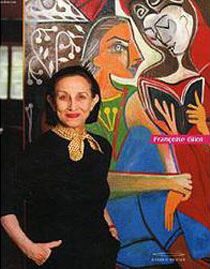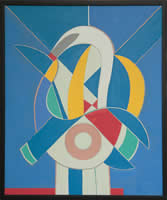Who is Françoise Gilot?
The art of Gilot is at once sharp, decisive, and complex. A free spirit, Gilot alternates between abstraction and figuration, escaping classification. Gilot decided to become a painter at the age of five, and subsequently drew prolifically. At fourteen she discovered Gauguin and Van Gogh. At 15 she visits the Paris International Fair of 1937, and sees paintings by contemporary painters Raoul Dufy, Robert Delaunay, Sonia Delaunay, and in particular Matisse. Gilot is in shock, astounded, and becomes intent on being a modern painter She will research what that means to the confines of her soul and creativity. In 1940, after the French defeat by the Germans, she decides to throw herself into oil painting, the most challenging and noble medium for a painter.






